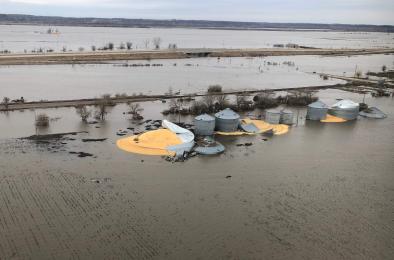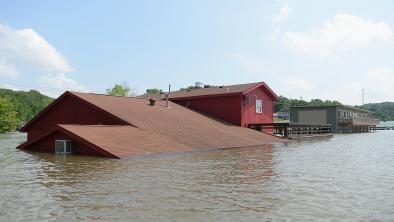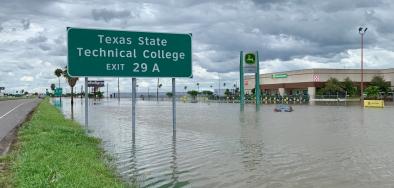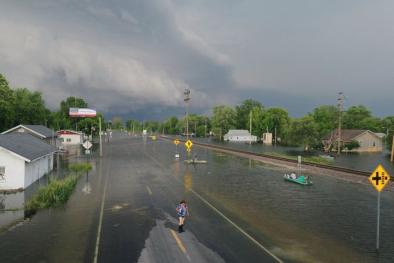Last year’s historic floods ruined 20 million acres of farmland
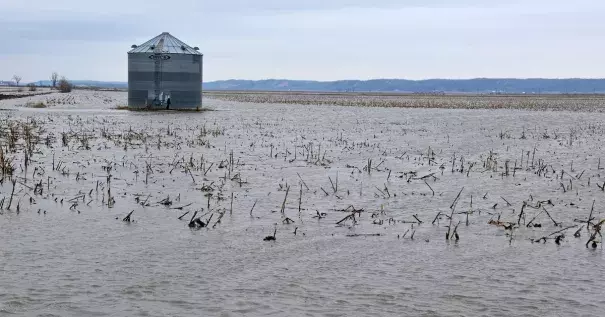
In the Mississippi River Valley, heavy spring rains devastated 250,000 acres of farmland in 2019, causing Governor Phil Bryant to declare the floods a historic disaster on par with the infamous 1927 floods that left the region under water for months. In the Texas Panhandle, farmers compared the dramatic impact of the rain and flooding to the effects they felt from the 2011 drought— the driest year on record for the state.
South Dakota was hit particularly hard, experiencing one of its wettest years since 1915. Warmer temperatures that might otherwise have been suitable for planting gave way to heavy rains over the summer which ruined what had been planted. The record-breaking spring rains were followed, months later, by record-breaking rainfall in September that wiped out what was left of the corn and soy crops, and damaged crucial roads and infrastructure in rural communities. “It's almost Biblical out there,” one farmer told UPI.
According to the United States Department of Agriculture, heavy spring rains across the nation in 2019 caused nearly 20 million acres of farmland to go unplanted. Farmers incurred, collectively, billions of dollars in losses, disrupting rural economies across the country as well as the communities they support. Last year was both the second hottest and second wettest year on record, according to the National Oceanic and Atmospheric Administration. The Mississippi River, Arkansas River, and Missouri River all flooded in 2019, and each ranked on NOAA’s all-time list of billion-dollar weather and climate disasters.
“Normally, rainfall is welcome here,” Jourdan Bell, a professor and agronomist with Texas A&M’s research center in Amarillo, says. “We’re in a semi-arid environment, with about 15 to 22 inches of rain yearly. But too much rain is like a double edged sword.”
The cotton crops that are common across much of the Texas panhandle have a narrow planting window, because they need to be planted in late winter or early spring, then harvested before the first freeze that usually occurs in October. With the extremely wet and rainy spring season this year, soils were too waterlogged and compacted to start planting— and so farmers weren’t able to plant early enough to avoid hitting the fall freeze. “It’s always been a climate of extremes in the Panhandle,” says Bell. “But in recent years, the extremes are more frequent.”
And that might become the new normal across the United States, as climate change intensifies extreme weather events. When the atmosphere heats up, it can hold more water vapor. And more water vapor means more rain and storms. Even for colder regions of the county, like the upper Midwest, that can spell trouble; storms usually form over the much warmer Gulf of Mexico and unleash the downpour as they move North. A 2019 study from researchers at the University of Illinois analyzed the USDA’s crop insurance program and found that these excessive rains can be just as damaging for crops as extreme heat or drought.
...
“There will be a record number of insurance payouts this year,” says Jennifer Fahy, the communications director for Farm Aid, a nonprofit that delivers relief aid to farmers across the county. “But that by no means reimburses the total loss that farmers face.” Some farmers are facing multi-year losses—those who stored grain on their land, waiting for higher prices once the U.S.’s trade war with China was resolved, lost the reserves as well, when the floodwaters damaged storage facilities. Farm Aid saw an unprecedented rise in the number of emergency assistance grants it issued this year—money that helps farmers keep the lights and heat on.
Related Content
